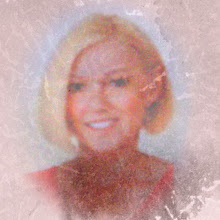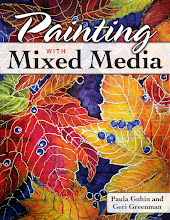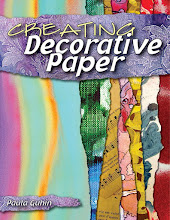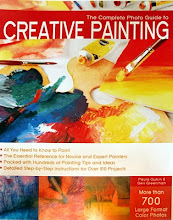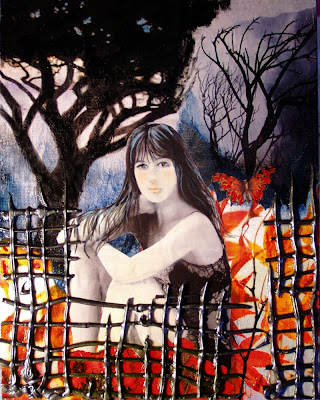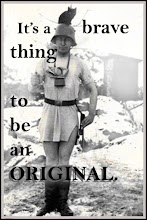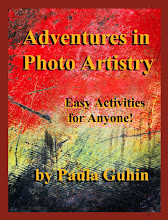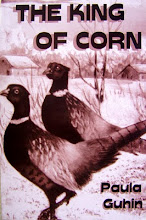Create interesting texture the easy way with these two ideas, on paper or canvas, in a journal or an altered book!
TEXTURE: the way a surface feels to the touch (or looks as
though it would feel).
I've used acrylic paint with this pair of simple techniques, but watercolor, ink, gouache, even spray paint would work.
If you have a bundle of raffia, shown at left below, cut some of it randomly. You likely want some shorter, some longer pieces, some thicker, some thin. And it doesn't matter what color the raffia is!
Apply the pieces to a dry canvas that's been gessoed. Adhere with plenty of gel medium. Allow to dry. Then paint a medium-toned color over all and let that dry too. I used a golden ochre color since I didn't like the magenta.
 |
| The texture pieces can also be applied to a previously-painted area! |
 |
| Not the prettiest textured area just yet. Next, wash in a thin, very dark shade that sinks into the crevices. |
 |
| The finished texture example, with dry-brushed areas. |
When the dark wash is dry, dry-brush a light color over the very tops of the textured pieces.
I glued elastic bands on with gel medium in the orange how-to example below. When that was dry, I covered all with the bright color.
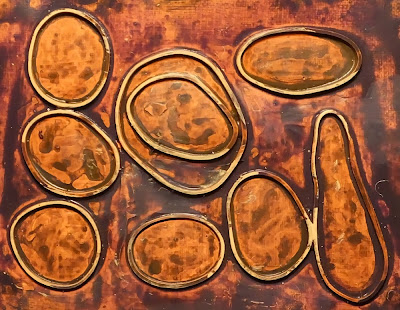 |
| Try it! I'll bet yours will be more successful! |


